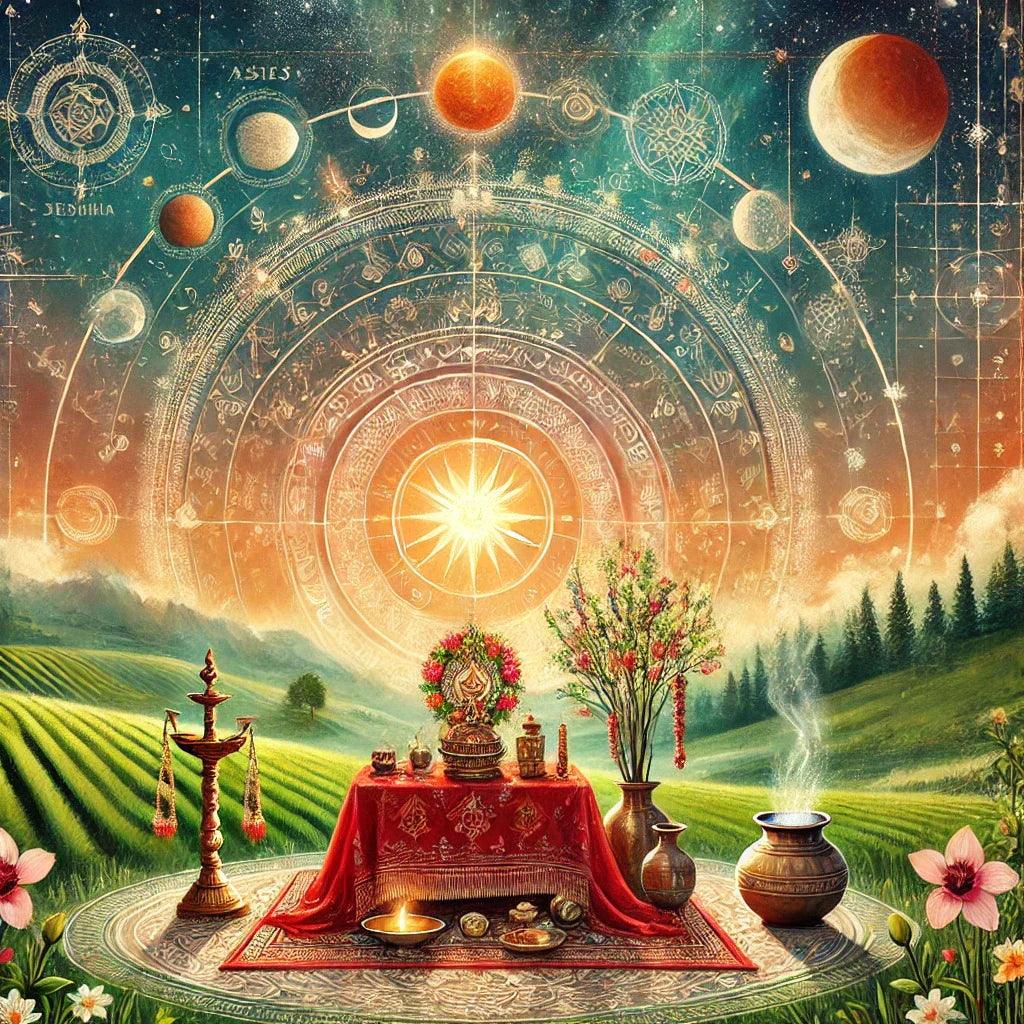
Chaitra Pratipada Explained: The Science-Backed, Astro-Perfect Start to the Hindu New Year
Share
Introduction
Chaitra Pratipada, also known as Hindu New Year, marks the first day of the Chaitra month in the Hindu lunisolar calendar. Widely celebrated as Gudi Padwa in Maharashtra, Ugadi in Karnataka and Andhra Pradesh, and Navreh in Kashmir, this day is more than just a religious festival—it is deeply connected to nature, astronomy, agriculture, and human biology.
This article explores modern scientific reasons, astronomical significance, and seasonal benefits behind celebrating Chaitra Pratipada as New Year in Hinduism. It combines traditional wisdom with a modern scientific outlook to help both Hindus and curious readers worldwide understand the deeper meaning of this age-old practice.
1. Astronomical Basis of Chaitra Pratipada
Aligned with the Spring Equinox: Chaitra Pratipada usually falls close to the spring equinox (March 20–21), when day and night are of equal length. This astronomical balance signifies: A natural reset in planetary cycles, The ideal time to begin a new year, reflecting harmony and equilibrium.
Sun’s Transit into Aries: Start of a New Zodiac Cycle. In Vedic astrology (Jyotish Shastra), the Sun enters Mesha Rashi (Aries) in mid-April. Chaitra Pratipada occurs just before this, in the Shukla Paksha Pratipada (first waxing moon) of Chaitra, indicating the start of the lunar year. Aries being the first zodiac sign, this period symbolizes a cosmic rebirth.
2. Seasonal and Biological Importance
Vasanta Hritu – The Indian Spring Season. Chaitra Pratipada coincides with Vasanta Hritu (spring), a season known for Flowering plants and new vegetation, warmer, longer days after the cold winter and heightened ecological activity and pollination cycles. The spring season also increases sunlight and boosts serotonin levels, improving mood and mental health. Sunlight aids in Vitamin D synthesis, enhancing immunity. Human metabolism aligns better with natural circadian rhythms in spring.
3. Agricultural Cycle and New Economic Year
Harvest Completion and New Sowing Season: In most parts of India, farmers complete the Rabi crop harvest by March, including wheat and mustard. Chaitra Pratipada is a post-harvest festival, celebrating abundance and preparing for a new sowing cycle.
New Fiscal and Agricultural Year: Historically, kingdoms and rural communities used Chaitra Pratipada as the start of the financial year, aligning with economic and agricultural cycles. It’s a natural fiscal new year for traditional economies.
4. Environmental Synchrony
Ecosystem Renewal: Insects, birds, and animals become more active, restoring ecological balance. The air quality improves, and green cover expands with fresh foliage. Chaitra Pratipada thus represents the environmental renewal of the planet—a moment when nature itself celebrates rebirth.
5. Scriptural and Mythological Alignment
Creation of the Universe by Brahma: According to Vayu Purana and other scriptures, Lord Brahma began the creation of the universe on this day. Thus, Chaitra Pratipada is observed as Srishti Din (Day of Creation).
6. Cultural Variations Across India
- Gudi Padwa in Maharashtra: Victory and prosperity symbol.
- Ugadi in South India: Beginning of a new era.
- Navreh in Kashmir: Spiritual and seasonal transformation.
- Cheti Chand for Sindhi Hindus: Day of birth of Jhulelal.
Conclusion: A Timeless, Scientifically Sound Tradition
Chaitra Pratipada is much more than a cultural tradition—it is a scientifically valid, seasonally appropriate, and ecologically synchronized moment for renewal. By aligning the New Year with:
- Astronomical events (equinox, Sun in Aries)
- Seasonal cycles (spring onset)
- Agricultural activities (post-harvest, pre-sowing)
- Biological health (mood, energy, immunity)
This ancient practice offers a powerful model of living in harmony with nature.
FAQs – Chaitra Pratipada and Hindu New Year
Q1: Is Chaitra Pratipada the same as Gudi Padwa or Ugadi?
A: Yes, they are regional names for the same lunar New Year based on the Chaitra month.
Q2: Why don’t Hindus celebrate New Year on January 1st?
A: January 1 is based on the Gregorian solar calendar with no cultural or astronomical relevance in Hinduism.
Q3: What makes Chaitra Pratipada scientifically relevant?
A: It aligns with the spring equinox, sun’s zodiac transition, and agricultural reset, making it a natural time to begin anew.
